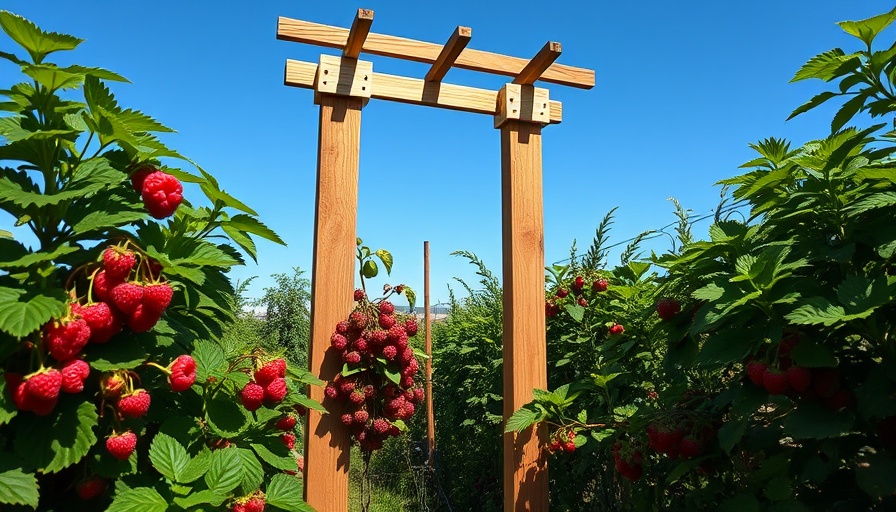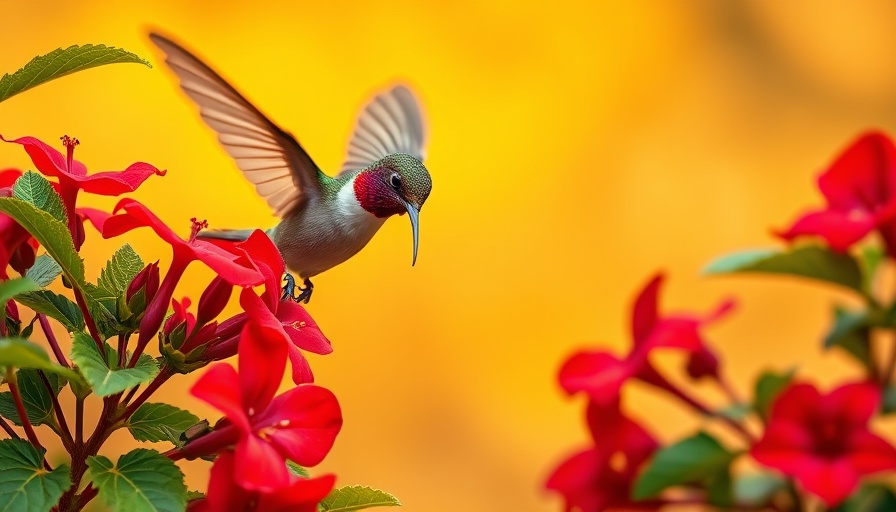
Unlock the Secret to Thriving Raspberry Plants
If you're dreaming of a kitchen garden bursting with fresh raspberries, it's not just about planting; it's also about providing the right support! Trellising your raspberry plants is crucial for keeping them healthy and productive. Not only does it prevent the canes from becoming a tangled mess, but it also significantly eases harvesting and improves airflow, reducing the risk of diseases.
Why Trellis Your Raspberries?
Raspberry plants are zealous growers. Without a proper trellis system, they can take over your garden and turn it into a chaotic mess. Did you know that trellising helps you maintain order and promotes better fruit quality? An effective trellis setup helps your raspberry plants remain upright and supported, enhancing their exposure to sunlight, which is vital for juiciness and flavor.
Exploring DIY Trellis Options
Ready to get started? Here are three DIY trellising options suited for different garden spaces and personal preferences:
T-Post Trellis: The Simple Solution
This method is a fantastic choice if you have a narrow patch. Using metal T-posts, you can string a wire between the posts to support your raspberry canes planted in a single line. This design is budget-friendly, easy to install, and adaptable, allowing room for future expansions.
Pros: Affordable, straightforward installation, and flexible.
Cons: You'll need to tie up canes regularly, and without maintenance, it can become messy.
T-Trellis Containment System: A Personal Favorite
In my garden, I've adopted a T-Trellis system nestled in a raised garden bed. This design not only supports the canes but also contains new growth effectively. However, I learned that regular pruning is necessary to ensure easy access to the fruit and to maintain airflow.
While it did take some time for me to get used to caring for the contained system, the payoff is worth it as my raspberries grow beautifully!
Invest in Your Berry Future
Choosing the right trellis method can have a profound impact on your raspberry harvesting experience. Raspberries need support, and taking the time to invest in a good trellising system will pay off for years to come, yielding a bountiful supply of juicy berries perfect for summer treats.
As you embark on your raspberry growing journey, reflect on the commitment you want to make towards maintaining your garden. Whether you opt for a simple T-Post system or the more involved T-Trellis method, the joy of harvesting your homegrown raspberries will surely make your gardening efforts worthwhile!
Get Started with Your Raspberry Garden Today!
Encouraged by the thrill of cultivating your garden? Start planning your raspberry trellis today, and embrace the satisfaction of home gardening. Believe me, the experience of biting into your fresh berries is truly unbeatable!
 Add Row
Add Row  Add
Add 




Write A Comment